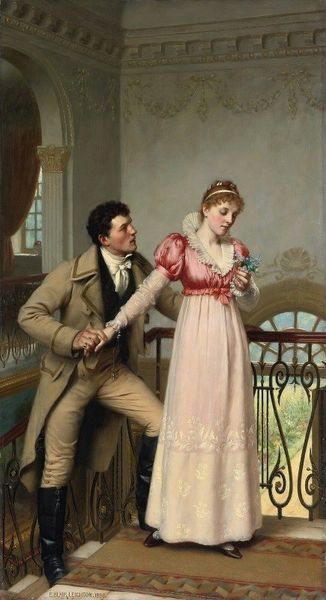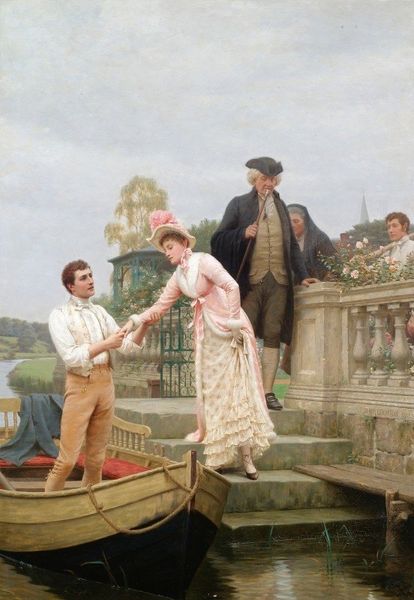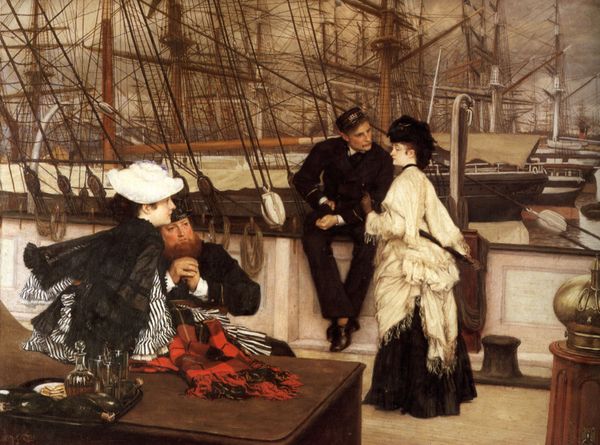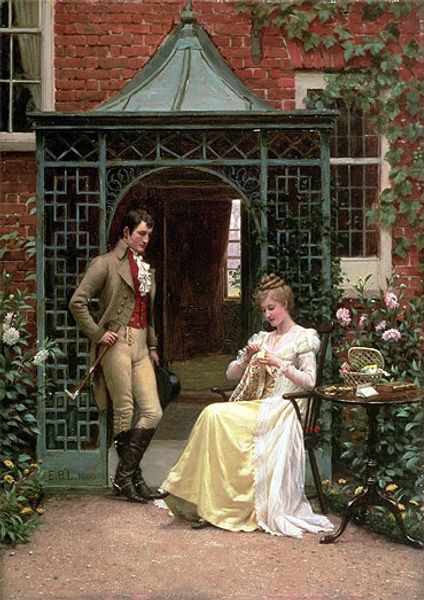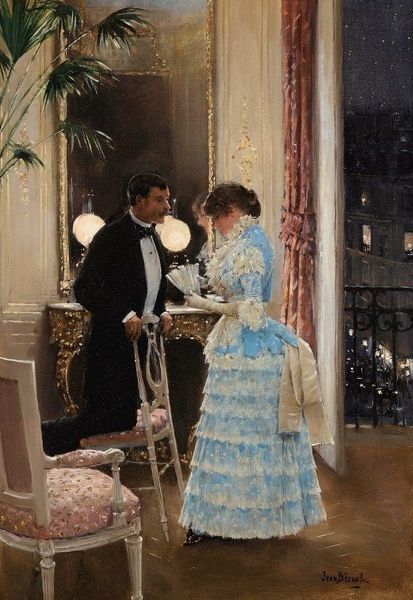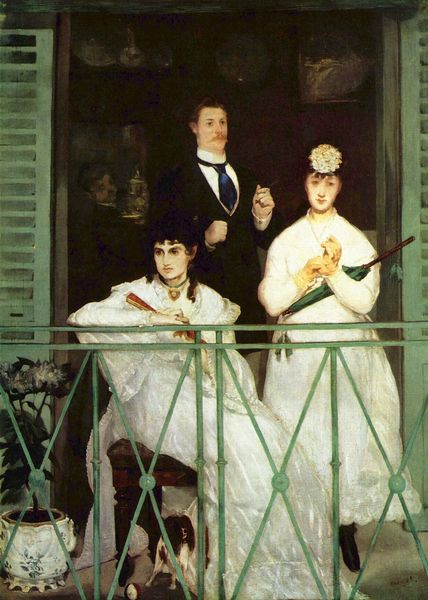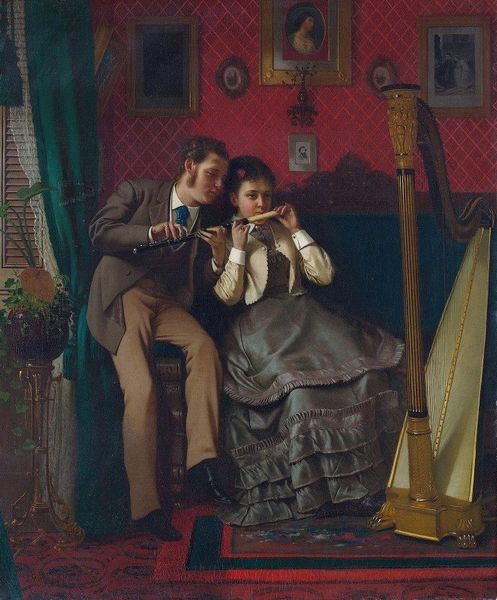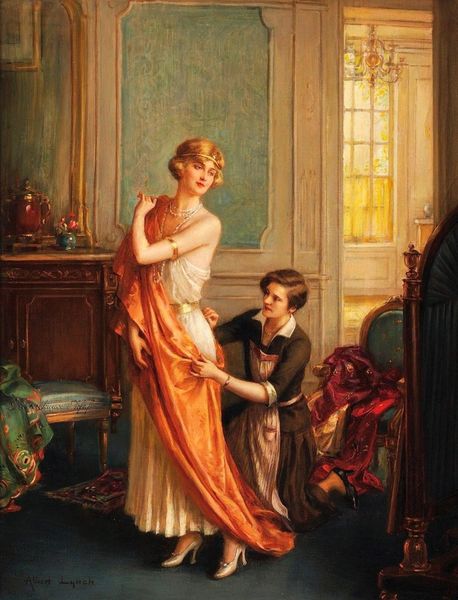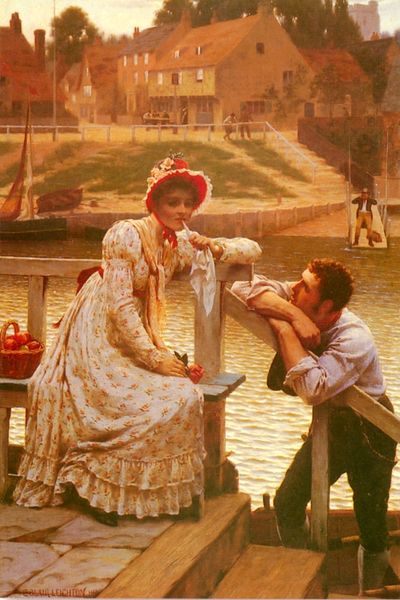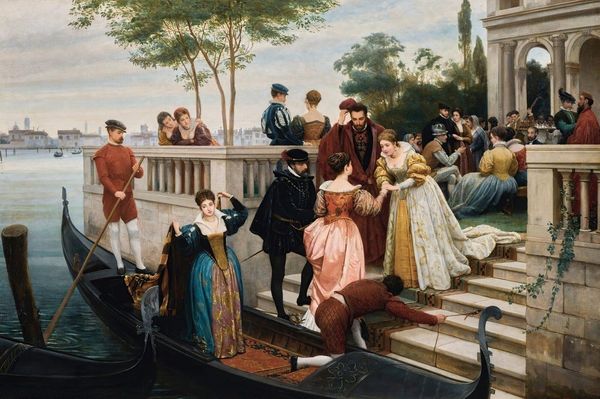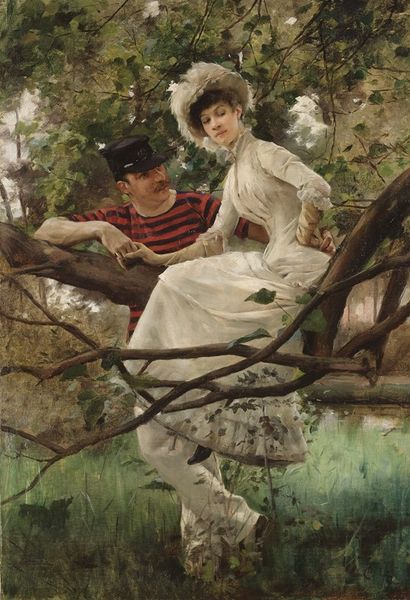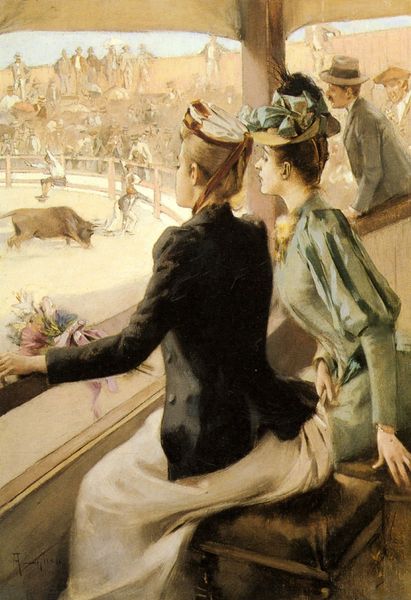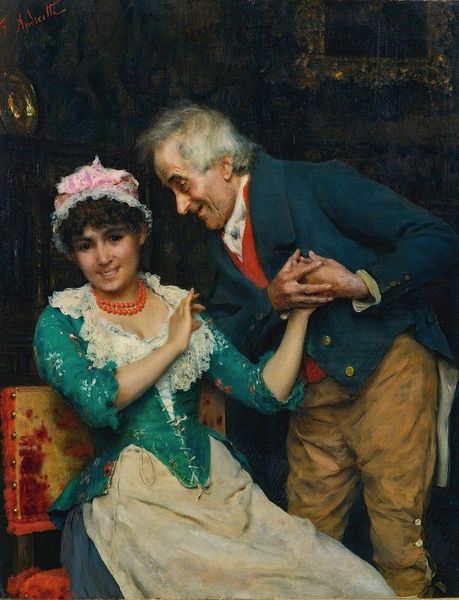
Copyright: Public Domain: Artvee
Edmund Blair Leighton painted ‘The Elopement’ during the late 19th and early 20th century in Britain, capturing a moment of daring romance and defiance of social norms. The painting suggests a narrative of forbidden love, and rebellion against the rigid Victorian social structure, particularly concerning marriage and women's roles. The woman, elegantly dressed, leaves behind the confines of her home, symbolized by the wrought iron gate, to join her lover in a boat, signaling a journey into the unknown. The scene plays into romantic notions of the Victorian era. The composition, with its delicate rendering of fabrics and natural light, evokes a sense of intimacy and secrecy. The act of elopement, while romanticized, represents a challenge to institutional control over relationships. Historical sources, such as Victorian etiquette guides and marriage laws, would provide a greater understanding of the social constraints that underpinned such a dramatic act. The meaning of the artwork is contingent on the social and institutional context of its time.
Comments
No comments
Be the first to comment and join the conversation on the ultimate creative platform.
